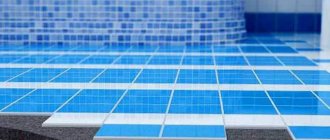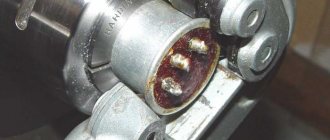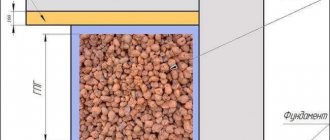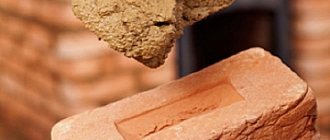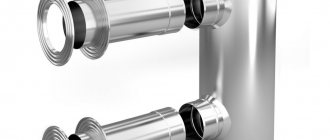History of the material
The birth date of polyurethane foam can confidently be called 1937, when a small group of scientists from a laboratory in Levenkusen synthesized a material with unusual properties. Depending on the mixing ratio of the components of the new material and how quickly the reaction took place, the properties of polyurethane foam were radically different. On the one hand, the material was elastic and flexible, but rather weak to resist tensile loads. On the other hand, strength, hardness, density, but brittleness when bending. The material had extremely broad prospects, but the Second World War significantly slowed down their implementation. However, starting from the 60s of the last century, the production of polyurethane foam began to develop at a rapid pace.
Biogenic properties
Polyols and polyisocyanates used for the production of polyurethane foam are petroleum products. However, it is known that polyurethane foam components can also be produced from vegetable oils. The best option for this purpose is castor oil. The polyol component can also be obtained from sunflower, soybean, and rapeseed oils. However, the cost of these raw materials is quite high and production is not economically feasible. Biogenic polyurethane foam materials are produced in small volumes and are used to solve very narrow specific problems.
Properties of polyurethane foam
Polyurethane foam produced by domestic and foreign manufacturers has a number of both positive and negative characteristics.
The low thermal conductivity of the material (0.019 - 0.03 W/m), almost complete vapor tightness, and water resistance make polyurethane foam an excellent heat and water insulator. The same can be said about sound insulation. The high adhesion coefficient makes it possible to apply polyurethane foam to almost any surface.
However, polyurethane foam is not characterized only by its positive qualities. Harm to human health can be caused during the burning of polyurethane foam (in the presence of a direct source of fire, the material burns). In addition, polyurethane foam releases toxic substances into the atmosphere - formaldehyde. Polyurethane foam, the components of which interact with air and water, is not resistant to sunlight. Over time it darkens and falls off.
Harm to health of polyurethane foam - a myth or a real threat to humans
Thus, during combustion, polyurethane foam can release toxic substances into the atmosphere in the form of formaldehyde, which lead to various poisonings. Therefore, we can conclude that when burned, the toxicity of this substance is high.
What is polyurethane foam and what properties does it have?
It is also used as a cold insulator and instep support. Often, many manufacturers also use polyurethane foam as a filler for upholstered furniture, mattresses and pillows, since it is quite soft in foam blocks.
We recommend reading: How many times can the debtor’s property be described?
On the packaging of epoxy resin ED-20, which can most often be found in the free sale of Russian construction supermarkets, among recommendations for use and descriptions of operating modes there is also a short safety instruction when working with this resin. Its essence boils down to the fact that when working in large areas, you need to use a respirator with a minimum protection class of “dust and smoke,” as well as protective transparent goggles, gloves and special clothing.
Scope of application of polyurethane foam

This modern building polymer has found wide application in various areas of human activity. Its widest area of application is in construction: thermal insulation, acoustic and waterproofing of civil and industrial facilities for any purpose (residential, country houses, workshops, warehouses, hangars, etc.). Due to low thermal conductivity, polyurethane foam is used to insulate not only roofs, but also walls, both inside and outside buildings. Sandwich panels made of polyurethane foam are indispensable in the construction of prefabricated construction projects.
Polyurethane foam with a density of 30-86 kg/m³ (rigid polyurethane foam) is used as a noise and heat insulation material. Material with a density of 70 kg/m³ has a dense structure, does not allow water to pass through and is successfully used for waterproofing work.
In the production of refrigeration equipment, polyurethane foam is used as a cold insulator. The shoe industry uses the material to make various shoe elements and instep supports.
However, there are areas where the benefits of using a material such as polyurethane foam are very questionable. Lining material and fillings for upholstered furniture, mattresses, pillows, etc. can be harmful to health. (polyurethane foam with a density of 5-40 g/m³ - soft foam blocks). Although PU foam manufacturers claim that the material is environmentally and biologically neutral, its use as a filler for children's toys can also make parents think about the health of their children.
Harm of glue kleiberite to health
It sets on surfaces in a few seconds, and for complete gluing it must be left for no more than 2 hours. Excellent adhesive properties allow you to connect various surfaces to each other: plastic, rubber, metal, wood, ceramics, leather and more. The scope of application of this product is quite wide.
We recommend reading: Theft Class Hour 9 Grade
Is polyurethane glue dangerous for health?
First of all, superglue is actively used in industry as a fixing agent in sewer systems, metalworking, when working with plastic, as well as for joining rubber and synthetic products in enterprises of various specializations. Cyanoacrylic adhesive is also popular for simple connections (seals on windows, fittings, door production), as well as installation work of varying complexity (connecting porous or homogeneous surfaces with horizontal and vertical orientation).
As will be discussed below, the properties of polyurethane largely depend on the types of isocyanates and polyols used to obtain it. The long flexible segments introduced by the polyol produce a soft, flexible polymer. Large amounts of cross-linking result in rigid polymers. Long chains and weak cross-linking produce a polymer that is very elastic; short chains with a lot of cross-linking produce a hard polymer. In some respects, a piece of polyurethane can be thought of as one giant molecule. One consequence of this is that typical polyurethanes do not soften or melt when heated; they are thermoset. This is quite an important property for an adhesive that claims to be on the pedestal of the world of structural adhesives.
Sleeping in the arms of PPU...
We will talk about such bedding items as polyurethane foam mattresses. Harm, quite serious, can be caused by inhaling fumes of complex volatile chemical compounds (about 30 types), the most dangerous of which are phenol and 2-ethylhexanoic acid. Moreover, new mattresses filled with polyurethane foam emit 5-6 times more hazardous substances into the atmosphere than old ones. The concentration of vapors of these substances is comparable to emissions from a new laminate flooring.
Assurances about the safety of mattresses filled with polyurethane foam are questionable for the simple reason that at the stage of their manufacture resins, catalysts, solvents, and active chemical components (phenol!) are used.
Is phenol a big threat?
Phenol is considered a toxic substance because it emits toxic fumes, and this process can continue for years without reducing or losing toxicity. This chemical element can cause disruption of the most important systems of the human body: respiratory, nervous, cardiovascular. The consequence may be headaches, loss of consciousness, and impaired coordination of movements. Kidney and liver function may also be affected. Constant contact with phenol and its vapors can cause the appearance of such serious diseases as asthma, infectious pulmonary pathologies, and allergies.
According to scientists involved in research in this area, the use of polyurethane foam for the manufacture of children's furniture, mattresses, and toys is unjustified. Polyurethane foam may well be replaced with safer materials. If parents are concerned about the health of their children, they need to be very careful when choosing toys and mattresses for them, in which polyurethane foam can be used as a filler. The majority of civilized countries have banned the use of phenol for the manufacture of everyday goods.
Harm of glue kleiberite to health
Polyurethane (PU): is a polymer containing urethane groups in the main chain of macromolecules. It is chemically inert, weather-resistant, resistant to temperature fluctuations, melts at t=300 ˚С, it can be located in close proximity to heating devices. Only open fire should be avoided.
What to do if a child eats wallpaper paste
If you add it to a portion of food, you will be full earlier. This is data obtained after an experiment conducted by researchers. They also advised adding the substance to cold drinking products: yoghurts or drinks.
When working with it, you should wear safety glasses, rubber gloves, and respirators. Polyethylene polyamine in large doses leads to respiratory failure and depression of the central nervous system; with prolonged exposure to the skin, it can cause lesions such as ulcerative dermatitis.
Failure to comply with safety regulations when working with them can lead to changes in the blood composition of workers, a decrease in blood pressure, depression of the central nervous system, respiratory failure and other disorders in the body. Hexamethylenediamine is a highly toxic product: at a vapor concentration of 0.1-0.01 mg/l, it causes a change in the composition of the blood and a decrease in blood pressure; If it gets in the eyes, it causes serious illness.
Harm to health from glue
Epoxy resins can also cause skin diseases (dermatitis, eczema) both through direct contact with them and when exposed to low concentrations of vapors from these products. The maximum permissible concentration for epichlorohydrin is 1 mg/m3. Epoxy resins contain epichlorohydrin and toluene, which at temperatures of 60 0C and above are released into the work area and negatively affect human health, affecting the nervous system and liver.
We recommend reading: In Novosibirsk, which of other regions, which pensioners travel for free on public transport
- Isocyanates contained in paints, polyurethane foam and other foam materials can cause asthma as an occupational disease in workers who come into direct contact with these substances without protection.
- Amine catalysts may cause hypersensitivity and irritation resulting in blurred vision. Is liquid polyurethane foam harmful if inhaled continuously? Such contact can cause severe irritation, ulcers and burns of the mouth, throat, and esophagus.
- The polyol manifests itself only through direct contact with the body (for example, when swallowed), causing vomiting, spasms and intoxication of the central nervous system
- Fire retardants can accumulate in the body, causing chronic poisoning even at low doses of evaporation.
So where is the truth?
Polyurethane foam - what is it? Is it harmful or beneficial? The huge number of places where polyurethane foam is used in various spheres of human life does not allow us to give an unambiguous answer to this question. For the construction industry, this is certainly a benefit, and a huge one. The ability to make a mixture and apply polyurethane foam to the insulated surface directly at the construction site reduces associated costs and allows you to create a monolithic polyurethane foam surface without cracks during installation and cold bridges. Thermal insulation of main pipelines, insulation of low-temperature pipelines in the chemical industry is also currently hardly possible with the same efficiency that polyurethane foam provides.
However, the use of this material in the production of goods for people (and for children in particular) seems to many specialists in this field not entirely justified. The release of toxic substances can have a negative impact on human health. Even before 2003, the manufacturing technology of domestic components for the production of polyurethane foam included the use of highly volatile ether compounds. Today, manufacturers claim that this technology has been abandoned. Within 3 days after application, the material is freed from a small amount of gases remaining after the reaction of the components, and after that the polyurethane foam is environmentally friendly.
In general, in each specific case, before using products made from polyurethane foam, you need to take a sensible approach to assessing all the pros and cons of using this material in a particular area of life.
Main Application
The process of insulating a roof from the inside with polyurethane foam. This common polymer has found wide application in various spheres of human activity. It is most widely used in construction: insulation with this material is very effective.
It is also used as a cold insulator and instep support.
Often, many manufacturers also use polyurethane foam as a filler for upholstered furniture, mattresses and pillows, since it is quite soft in foam blocks.
Attention:
a mattress or pillow made of such material can actually harm human health, although suppliers claim otherwise.
Polyurethane foam as a filler for upholstered furniture
Why is polyurethane foam in furniture harmful? There are several reasons, the most common of which are the following:
Of course, it's not all bad. Many manufacturers have refused to include toxic substances such as phenol in polyurethane foam. Therefore, modern furniture is quite environmentally friendly and safe, but you should not “blindly” trust words.
Review from
PPU insulation is a reliable barrier for heat preservation. So, to summarize. Today it is impossible to give a definite answer to the question “is PPU harmful or not?” Polyurethane foam is one of the most commonly used and useful materials in construction.
However, its impact on human health when purchasing furniture and goods is not fully known, since many scientists and chemists claim that insulation is harmful, but manufacturers deny this.
In general, a person needs to decide for himself whether or not to use this material for work, whether to buy things and products made from it or not. But, of course, it’s worth thinking about the choice several times, weighing the pros and cons, since polyurethane foam is not as simple as it might seem.
Watch the overview video
, telling in detail about polyurethane foam insulation and its properties:
Polyurethane is a synthetic polymer material, also called “foamed plastic”. It was first obtained in the 30s of the last century; now polyurethanes are a group of materials with a wide range of characteristics, specified depending on the requirements for the product. The following are produced from “foamed plastics”:
- parts of machines and mechanisms that are resistant to increased friction - polyurethane ones are more durable and wear-resistant than metal ones;
- connecting elements insensitive to aggressive environments with antibacterial properties - polyurethane tubes are indispensable in the food and chemical industries;
- suitcases, backpacks, bags - polymer with “adjustable” parameters allows you to create any fabric texture, which is used by many designers;
- leatherette for the production of clothing, shoes, gloves, belts - polyurethane “leather” lasts longer and looks more attractive than a regular substitute made from polyvinyl chloride;
- waterproof shoes - polyurethane is stronger and more durable than artificial rubber, and costs less than natural rubber.
